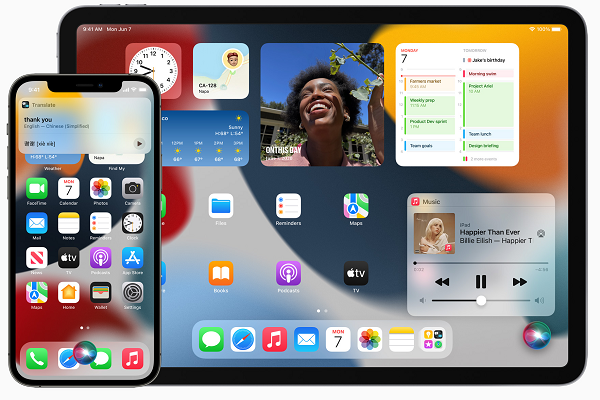Apple Debuts Siri Support on Third-Party Devices and Offline Access at WWDC
 Apple announced at this year’s WWDC event that third-party devices will be able to start integrating Siri soon. Any HomeKit accessory manufacturer will be able to begin adding the voice assistant to their products upon approval by Apple. The reveal was one of only a few mentions of the voice assistant, including the ability to interact with Siri offline thanks to purely on-device processing for the first time.
Apple announced at this year’s WWDC event that third-party devices will be able to start integrating Siri soon. Any HomeKit accessory manufacturer will be able to begin adding the voice assistant to their products upon approval by Apple. The reveal was one of only a few mentions of the voice assistant, including the ability to interact with Siri offline thanks to purely on-device processing for the first time.
Third-Party Siri
Apple’s plan is for Siri to be accessible through devices built with Apple HomeKit. Users will be able to access the voice assistant on any approved device connected to their network. Which devices are already approved has not been revealed, though the demonstration on a thermostat made by Ecobee suggests at least one extended brand that will start including Siri’s voice commands. Apple also said it would be supporting the new interoperability standard Matter with iOS 15. Matter’s supporters also include Samsung, Amazon, and Google, so Siri may soon be counted among their respective voice assistants as options for smart home ecosystems.
“‘Hey Siri’-enabled accessories will relay requests through HomePod or HomePod mini and will support features such as Personal Requests, Intercom, timers, and alarms,” Apple explained about the change. “Starting today, smart home device manufacturers can begin working with Apple to integrate Siri into their accessories.”
The HomePod and HomePod Mini are adding their own new features related to Siri, generally extending the Apple smart home network. HomePods connected to Apple TVs will now process requests to Siri for the TV. And the HomePod Mini will now be able to connect to Apple TVs, as well as support Apple Music’s lossless audio. Even Apple Watches can now be considered part of the HomePod accessory network, with access to doorbells and smart home devices operating through HomeKit.
Siri On-Edge
Siri had always needed to be connected to the internet to function, even when a request involved nothing but a specific device. Apple is eliminating that barrier for the voice assistant. Most, though not all, of the voice processing, will now take place on iPhone and iPad. That means Siri will work in Airplane Mode or when out of reach of the internet. Users will be able to launch apps, adjust settings, and control audio content by voice at any point. According to Apple, this is as much about people’s data security as it is about making the voice assistant more appealing in more contexts.
“With on-device speech recognition, the audio of users’ requests is processed right on their iPhone or iPad by default,” Apple explained. “This addresses one of the biggest privacy concerns for voice assistants, which is unwanted audio recording.”
Beyond the two reveals above, there were only a few interesting announcements related to voice technology. Safari has a new voice search function in iOS 15, accessible with a microphone icon in the address bar. Once tapped, the user just says what they are looking for, and the browser will use the default search engine to hunt for it. Apple’s AirPods Pro wearables are also getting an upgrade with the new Conversation Boost feature, designed to isolate human voices and act like hearing aids, a trend getting more traction coming from the other direction with hearing aid makers producing Bluetooth-enabled earbuds that the FDA approves as medical devices. However, the AirPods upgrade also enables Siri to announce when an important notification comes in or to read a grocery list at the store.
Follow @voicebotaiFollow @erichschwartz








